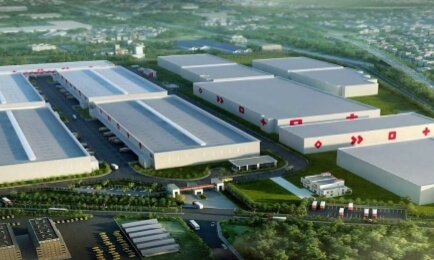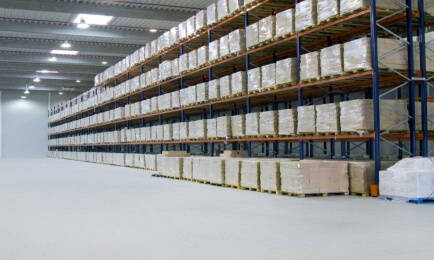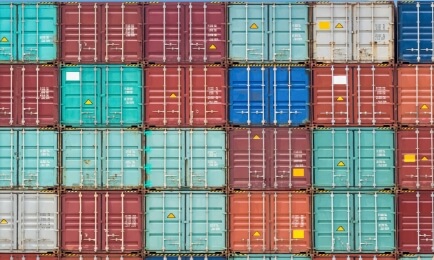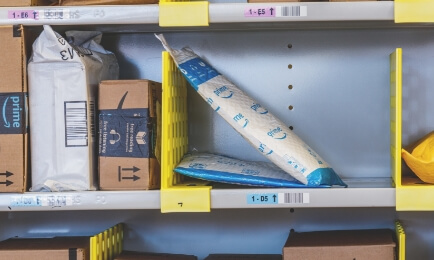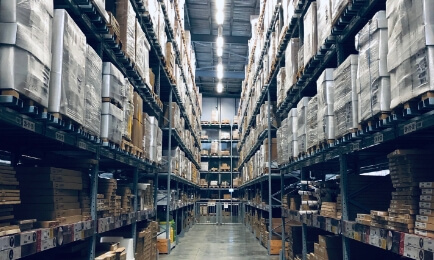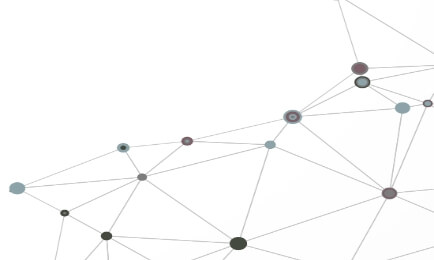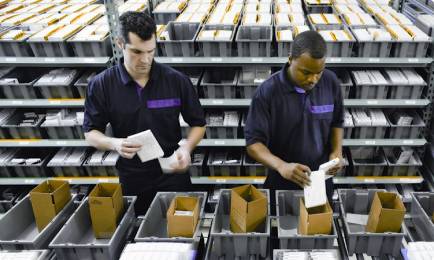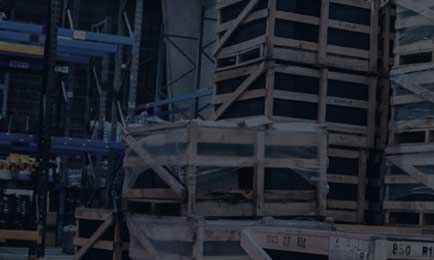Supply Chain and Distribution Network Optimization
The textbook definition of a distribution network is "an interconnected group of storage facilities and transportation system in the supply chain that receive goods at the production stage and deliver it to end customers." The lesson to be learned from industry leaders such as Amazon and Walmart is that a fast and responsive distribution network is crucial to fulfilling customer's expectations and staying profitable in a competitive market.
Whether you're a small scale business owner or an individual logistics manager, in the continuously changing environment, it is essential to fine-tune your distribution network in the most innovative ways. For businesses, it is essential to balance distribution network costs with responsive customer service. The act of balancing operating expenses with working capital is called Distribution Network optimisation. In majority cases, the straightforward option of remaining competitive in today's market where customers are inclined to "buy it now" nature is brainstorming ways to reduce logistics operations costs and increase logistical efficiency and introduce quick shipping at lower costs, leading to better customer satisfaction.
Supply chain comprises of various stages from the point a product is manufactured to when it reaches a customer. However, today's consumer market demands businesses to be more agile and responsive. Leading players such as Amazon and Walmart are thriving by optimising their distribution network, by building distribution centres close to consumer markets and offering quicker delivery and services. Decentralising the distribution network is transforming the way businesses meet customer expectations. In contrast, a centralised location no more allows growing businesses to remain competitive with companies like Amazon and Walmart.
Decentralised Supply Chain
It is undeniable that a significant differentiator for success is the speed and reliability of your supply chain. Hence, an important question arises: how do businesses achieve that level of agility and responsiveness?
For years, businesses have operated under centralised distribution. Typically, a centralised distribution refers to a 'central' location that acts as a single hub for all distribution operations. On the contrary, if there are multiple hubs maintained at separate locations, it is easier to handle area-specific product lines. The problem with centralised distribution is.
- It confines the business to a particular location in multi-year contracts regardless of growth or opportunity in the market.
- Last-mile is a critical leg in the supply chain that refers to the distance from the distribution centre to the end-customer. Centralised location often increases last-mile costs and also results in late-delivery times.
- Ownership of staff and cost is different areas of operations such as security, systems, recruiting and training is very expensive.
- Cross-country customers have to deal with high shipping prices. In a market that is dominated by two-day delivery, this propels them to look elsewhere for fulfilment.
Decentralised distribution is a concept that is transforming the way businesses operate their supply chain. When a business shifts to a decentralised distribution model, the products no-more stay at a central location but are preferably held at multiple-locations close to customers. A decentralised distribution allows the supply chain to attain greater flexibility across its distribution network and be more responsive to fluctuations in demand.
Modern shippers need to divert their focus towards efficiency more so than ownership of assets, as efficiency in the supply chain is directly proportional to growth and profits. The merits of adopting a decentralised distribution model are.
- Every branch of the distribution network can be synchronised to that specific area's demand, serving a customer base.
- Inventory can be divided into multiple locations, thus reducing stock holding costs and inventory overflow conditions.
- It is a much more customer-centric approach, as customers with urgent needs can opt for same-day deliveries at moderate costs.
- Customers gain a considerable amount of trust factor and reliability, finding a local address on shipping invoices.
An e-commerce giant like Amazon is increasing the number of distribution centres every year across the globe. To manage last-mile efficiently, they also aim at opening 3,000 Amazon-go stores by 2021, allowing customers to order online and pick-up products as per convenience. To deal with such customer expectations requires new businesses and brands to be prepared and choose cost-effective alternatives to stay competitive. One such concept that's making supply chains more agile and reliable is 'Network Distribution'.
Network Distribution
A network distribution system provides e-commerce businesses, manufacturers, retailers, wholesalers and distributors with a technology that allows them to find and distribute inventory across multiple locations, at warehouses close to customers via a single cloud platform. Network distribution will enable businesses to meet service level expectations while remaining customer-centric. Hence, promoting more savings and making better data-driven decisions.
To stay in alignment with customer needs and to compete with brands such as Amazon and Walmart, it is not mandatory to invest more money in buying real estate across multiple locations. Businesses can achieve cost-reduction and supply chain and distribution network optimisation by choosing the right third-party logistics provider to streamline the majority of supply chain operations at affordable costs. A vital determinant for growth in businesses is not only efficiency but the strategy through which companies approach distribution network issues and challenges.
In modern times, what has proved beneficial for businesses is paying more attention to last-mile shipping data, inventory balances, product rapidities, and gaining more insights into the supply chain functioning. If investments bring more considerable savings; it is wise to invest in visibility tools that provide quality insights on the movement of your goods, shipments, inventory stock, quality of supplier and much more. It is self-evident that businesses want to secure a competitive edge by meeting customer expectations and have a dynamic distribution network. In contrast to the potential savings that companies will attain in future, investing in data-driven tools is only viable and allows enterprises to stay customer-centric.
A global entertainment company found itself amidst a rut when they had planned to introduce 18 new venues in the U.S., and they were handling construction materials for these venues. The company was struggling with 18 warehouses in its distribution network, as all warehouses used different software systems or no systems at all. Managing orders, inventory, trucking, documentation and distribution became disorganised and implemented in a haphazard fashion. The company also had multiple suppliers and contractors that often led the pick-up of wrong products, loss or record and the product itself. STORD, one of the leading digital warehousing platform was able to help them
- Reduce the error rate from 26.6% to 0%
- Lower product loss rate from 7.2% to 0.57%
- Cut project delivery time from 8-10 days to 3 days
- Shorten average last-mile distance from 135.2 miles to 12.6 miles
With STORD's nation-wide network of warehouse facilities and a single software, the entertainment company was able to manage disorganisation within its distribution network. Warehouses at STORD are fully vetted and follow a single SOP.
Network distribution represents a warehousing and distribution model that provides a convenient, long-term solution to move products seamlessly. The model allows distribution networks to be agile and responsive with intelligent software while eliminating manual work, long contracts, no visibility and temporary fixes. A network distribution model benefits businesses with faster delivery, lower costs, improved visibility and higher productivity.
Stockarea is your single partner that provides businesses with a nation-wide network of third-party logistics providers and warehouses. Stockarea's unique platform connects you to multiple facilities digitally allowing real-time inventory visibility and cloud-based operations. Our expert logistics team is at your disposal throughout the year, while also providing a single point of contact, standard operating procedure and bill-payment platform. A single dashboard provides a medium to gain growth-centric insights for your supply chain and distribution network throughout the year. Partner with us today!
Talk to an expert today 




